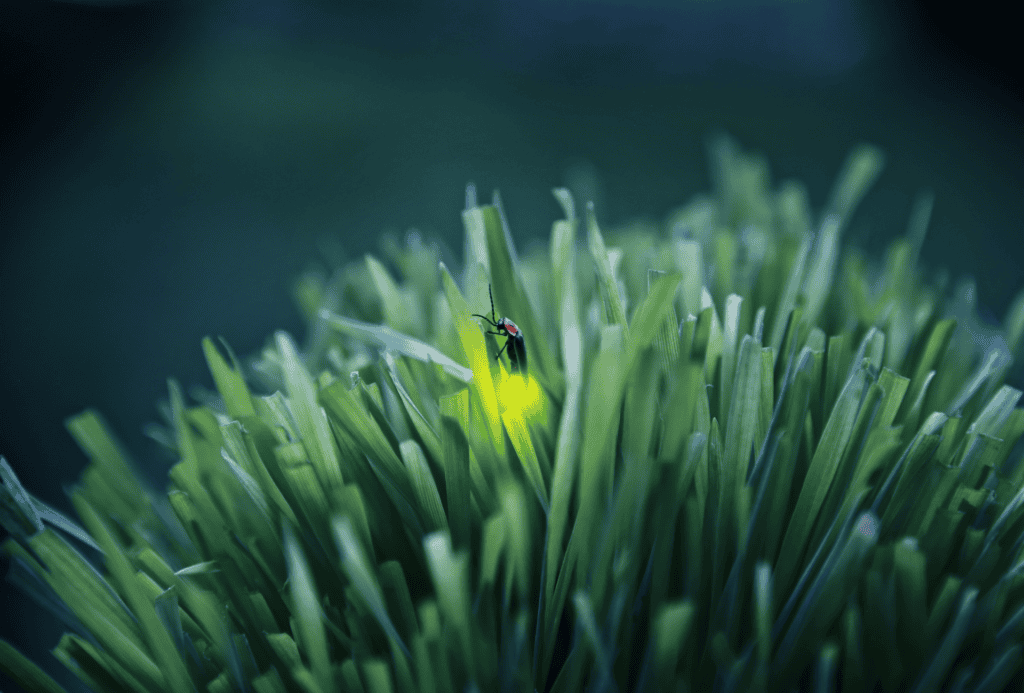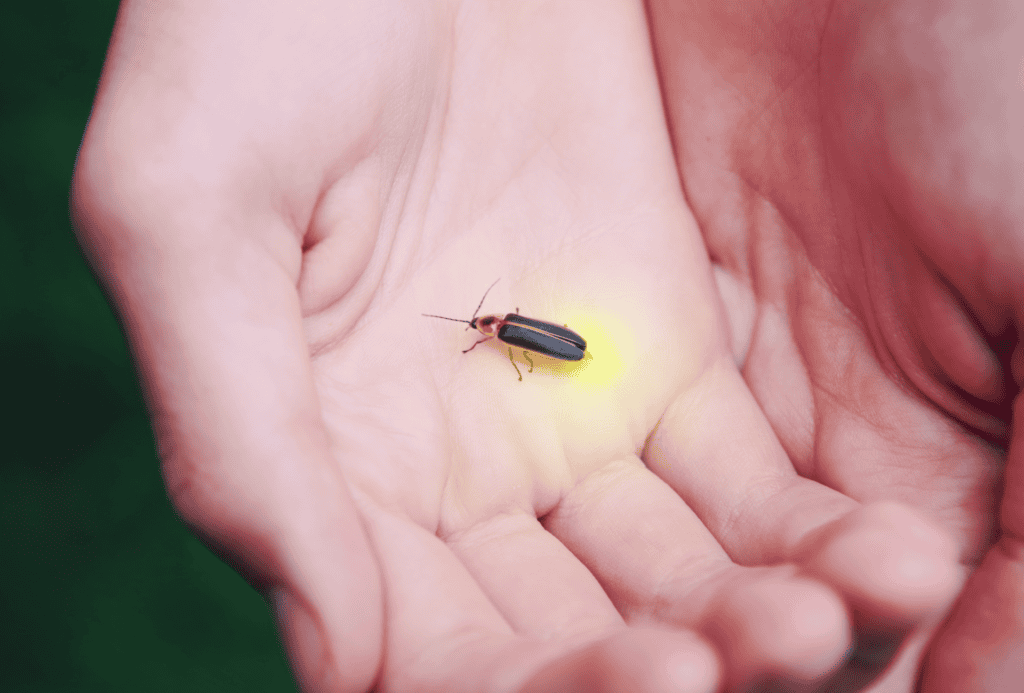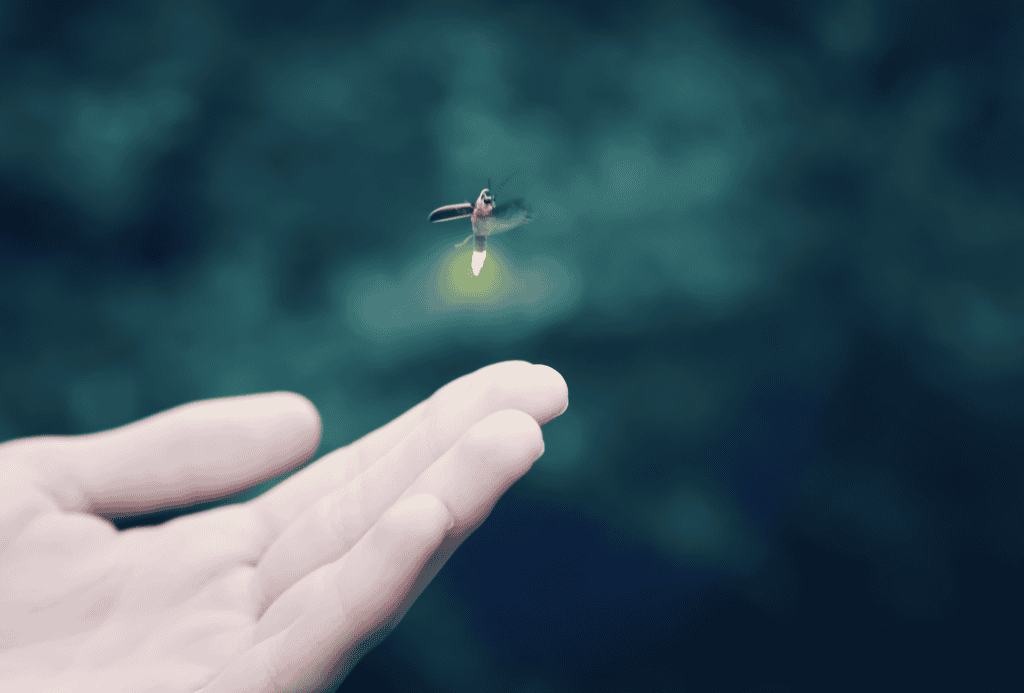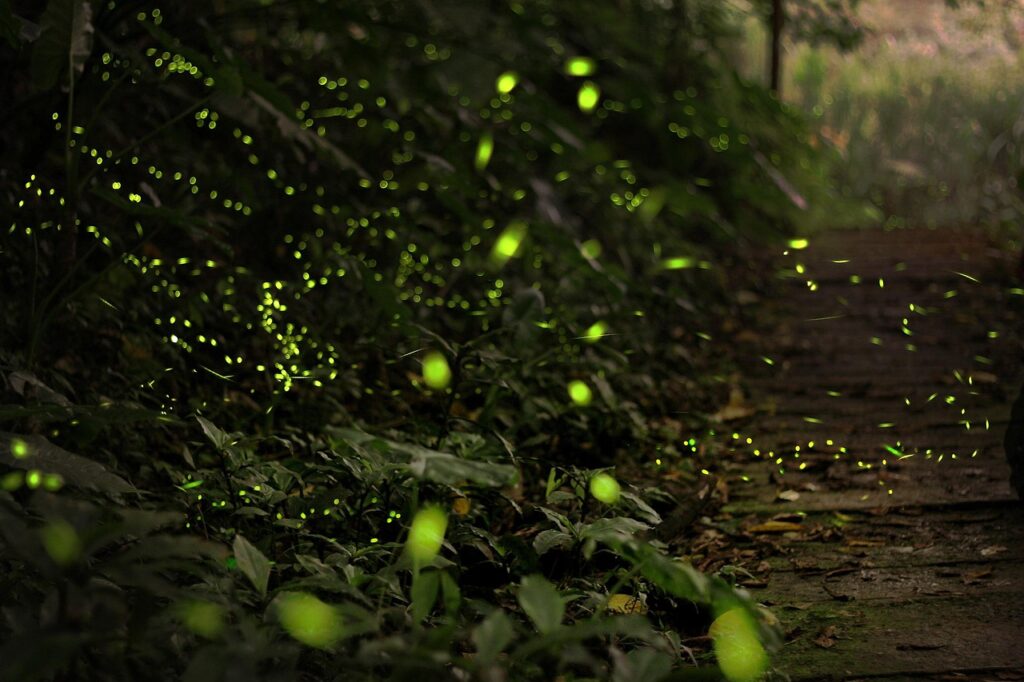The Susquehanna Greenway is aglow this month thanks to the bright lights of this Greenway native and Pennsylvania state insect: the firefly. These small but mighty insects are hallmarks of summer. Their mesmerizing light shows capture the imaginations and the hearts of adventurers the world over, but how much do you really know about these talented creatures?
They go by many names
 If you’re from the New England or the West, you probably refer to them as ‘fireflies,’ but if you’re from the South or the Midwest ‘lightning bug’ is more common. However, these insects are actually not a ‘fly’ nor a ‘bug.’
If you’re from the New England or the West, you probably refer to them as ‘fireflies,’ but if you’re from the South or the Midwest ‘lightning bug’ is more common. However, these insects are actually not a ‘fly’ nor a ‘bug.’
They are in fact members of the Lampyridae family of winged beetles; that’s right, they are beetles! The word Lampyridae actually comes from the Greek ‘lampein,’ which means ‘to shine.’
They undergo a chemical reaction in their abdomens

This reaction produces their flash, which, depending on the species, can range from yellow, orange, and our favorite–GREEN. While more than 2,000 species bear the name “firefly,” not all of them glow.
Those that are lucky enough to flash do so by mixing oxygen with a pigment called luciferin to generate light with very little heat. They are actually one of the most efficient energy producers in the natural world. In fact, almost 100 percent of the energy they produce is emitted as light. Compared to an incandescent light bulb, which only emits 10 percent of its energy as light, that’s pretty incredible.
Why do they glow?

Fireflies light up mainly to attract a mate. Male fireflies flash while hovering over tall grass or trees. If a female firefly decides she likes the male, she will respond with her own unique series of flashes from lower on the ground.
Since each species of firefly has its own unique flash, it’s important for females to figure out which males are the right ones. A good pick up line, like “you look flashy tonight,” can sometimes help things along.
They Live Short but En-lightened Lives

The egg to larvae stages of the firefly life cycle last from the end of summer to the spring, after which the small larvae dedicate all their energy to growing wings and hard-shells. Once they emerge as fully-fledged fireflies in the late spring, the small glowing insects only have about two months to find love before their lights go out forever.
Disappearing Lights

Unfortunately, our luminescent friends are lighting up in lower numbers. Because fireflies are sensitive to temperature, climate change is disrupting their life cycles. Fireflies are also losing grassy and moisture-rich habitat to urban paved surfaces. Cities are also a common source of light pollution. Artificial light can confuse firefly mating communication, which means fewer fireflies next season.
How to be Firefly Friendly

Fireflies need our help! There are things you can do – and avoid doing – to make your neighborhood firefly friendly.
-
Turn off outside lights. You can lessen the disruptive effects of light pollution by keeping porch lights turned off. Motion lighting and garden lights can also mess with firefly communication. Keep your backyard dark and enjoy the glowing conversation!
-
Don’t over mow the grass. Lightning bugs prefer tall grass. Take longer breaks between mowing or leave an unmowed patch in the yard.
-
Leave the logs. Speaking of lawn care, you can let the leaves and logs pile up for a bit. Firefly larvae rely on forest debris for their habitat.
-
Just add water. If you do decide to do a yard makeover, try adding some water features. A pond, stream, or in-ground bird bath will add much-needed moisture. Remember, swimming pools don’t count! Fireflies don’t like chlorinated water.
-
Spread the word. Let your neighbors know how you’re making your yard firefly friendly! Everyone doing their part ensures lightning bugs keep lighting up future generations.

Where are the best places to watch fireflies in the Susquehanna Greenway?
Now that you know some cool firefly facts, the hot humid days of July and August are the perfect time to get outside and watch the light shows. Since fireflies are cold-blooded, hotter weather means their flashes will be longer and brighter.
We recommend fields with tall grasses and low light pollution. Areas where the grasses meet the forest line offer an ideal dark backdrop for the incandescent glows. The river banks of the Susquehanna are always a great place to catch some bioluminescence.
Check out our Interactive Map to find a public river access near you, or you can explore our inventory of parks and trails.
This summer, you can also help scientists learn about the geographic distribution of fireflies and what environmental factors impact their abundance through the Firefly Watch Community Science Project. Just pick a spot to observe them, and map them here.
The Susquehanna Greenway is a corridor of connected trails, parks, river access points, and communities, linking people to the natural and cultural treasures of the Susquehanna River. The mission of the Susquehanna Greenway Partnership is to continue to grow the Greenway by building connections along the Susquehanna River, inspiring people to engage with the outdoors, and transforming communities into places where people want to live, work, and explore.


